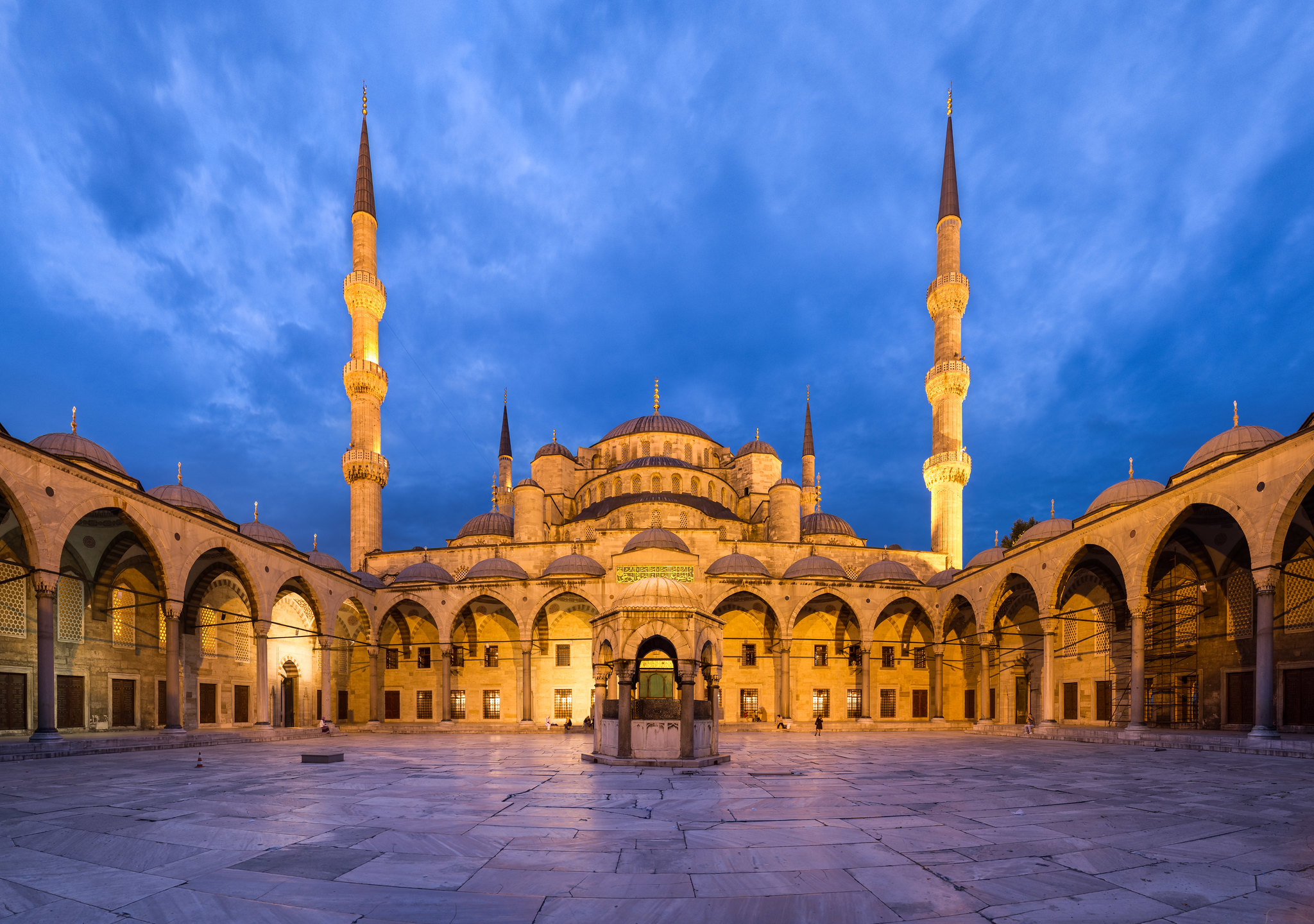Istanbul, the vibrant city straddling two continents, is home to countless architectural wonders that reflect its rich history and cultural heritage. Among these, the Blue Mosque stands out as a true masterpiece of Ottoman architecture and Islamic art. This stunning 17th-century mosque, with its six minarets and exquisite blue Iznik tiles, has captivated visitors for centuries and continues to be a must-see attraction for tourists from around the world.
Officially known as the Sultan Ahmed Mosque, the Blue Mosque was commissioned by Sultan Ahmed I in the early 17th century. Construction began in 1609 and was completed in 1616, just a year before the sultan’s untimely death. The mosque was designed by Sedefkâr Mehmed Ağa, a student of the renowned Ottoman architect Mimar Sinan, and was intended to rival the nearby Hagia Sophia in grandeur and beauty.
The mosque’s construction was not without controversy. Its six minarets, a feature previously exclusive to the holiest mosque in Mecca, caused an uproar in the Islamic world. To appease critics, Sultan Ahmed I ordered a seventh minaret to be added to the mosque in Mecca, ensuring its continued supremacy.
The Blue Mosque’s exterior is a sight to behold, with its cascading domes and slender minarets creating a harmonious silhouette against the Istanbul skyline. The mosque’s main dome, measuring 23.5 meters in diameter and 43 meters in height, is supported by four semi-domes, creating a pyramidal structure that draws the eye upward.
The six minarets, each with three balconies, stand at the corners of the mosque complex. These elegant towers, reaching heights of 64 meters, were traditionally used for the call to prayer and remain an iconic feature of the mosque’s exterior.
The mosque’s courtyard, larger than the prayer hall itself, is surrounded by a colonnaded peristyle with small domes crowning each bay. The ablution fountain at the center of the courtyard adds to the serene atmosphere and serves a practical purpose for worshippers preparing for prayer.
Stepping inside the Blue Mosque, visitors are immediately struck by the sheer beauty and intricacy of its interior decoration. The mosque derives its popular name from the thousands of blue Iznik tiles that adorn its walls, creating a mesmerizing sea of blue hues.
These handcrafted tiles, featuring intricate floral and geometric patterns, cover the mosque’s lower levels and galleries. More than 20,000 tiles were used in the decoration, showcasing the pinnacle of 17th-century Iznik craftsmanship. The predominant blue color is complemented by touches of green, turquoise, and red, creating a vibrant yet harmonious palette.
The mosque’s interior is illuminated by 260 windows, many of which feature exquisite stained glass. Natural light filters through these windows, creating an ethereal atmosphere and highlighting the intricate calligraphy and decorative elements throughout the space.
The mihrab, the niche indicating the direction of Mecca, is adorned with finely carved marble and flanked by candles. The nearby minbar, or pulpit, is an impressive structure made of marble and adorned with gold decorations.
The Blue Mosque remains an active place of worship, welcoming both worshippers and tourists. Visitors are allowed to enter the mosque outside of prayer times, which occur five times daily. During the holy month of Ramadan, the mosque may have altered visiting hours to accommodate increased prayer activities.
When planning a visit, it’s essential to dress modestly out of respect for the religious significance of the site. Women are required to cover their heads, and both men and women should ensure their shoulders and knees are covered. Scarves and robes are available at the entrance for those who need them.
Visitors are asked to remove their shoes before entering the mosque, with plastic bags provided to carry them. As you explore the interior, remember to be quiet and respectful, as worshippers may be praying or meditating.
The Blue Mosque is not just a singular attraction but a crucial part of Istanbul’s historic Sultanahmet district. This area, designated as a UNESCO World Heritage site, also includes other notable landmarks such as the Hagia Sophia, Topkapi Palace, and the Hippodrome.
Visiting the Blue Mosque offers a unique opportunity to witness the intersection of Ottoman architecture, Islamic art, and Turkish culture. Its enduring beauty and spiritual significance make it a testament to Istanbul’s rich history and its continued relevance in the modern world.
The Blue Mosque stands as a crowning achievement of Ottoman architecture and a symbol of Istanbul’s cultural richness. Its stunning exterior, with its graceful domes and minarets, and its breathtaking interior adorned with thousands of blue Iznik tiles, create an unforgettable experience for visitors. Whether you’re an architecture enthusiast, a history buff, or simply a traveler seeking beauty and inspiration, the Blue Mosque is an essential stop on any Istanbul itinerary. As you stand in awe of this 17th-century masterpiece, you’ll understand why it has captured the hearts and imaginations of visitors for centuries, and why it continues to be one of Istanbul’s most beloved landmarks.

